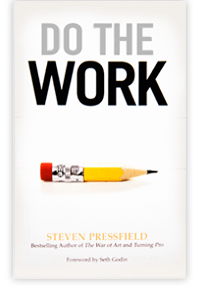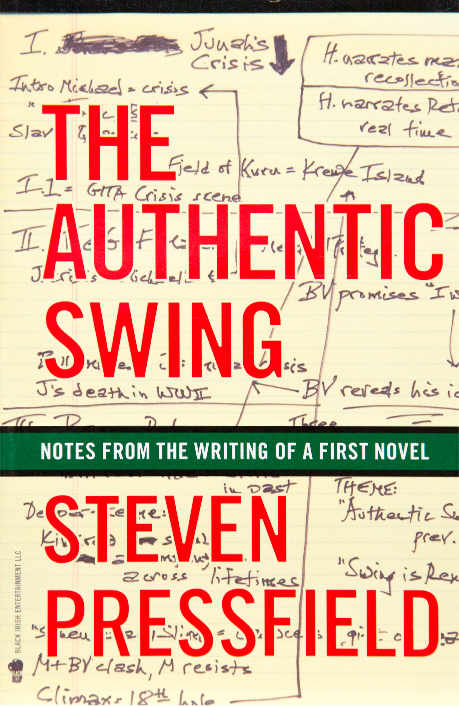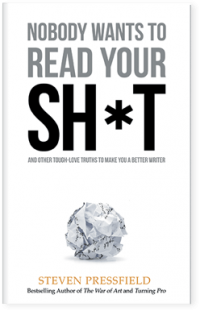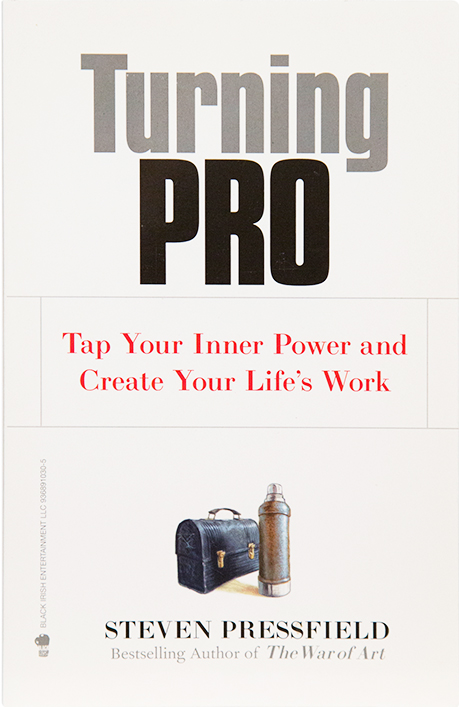Cover the Canvas

Is the first draft the hardest? Is it different from a third draft, or a twelfth? Does a first draft possess unique challenges that we have to attack in a one-of-a-kind way?

Cover it, baby!
Yes, yes and yes.
A first draft is different from (and more difficult than) all subsequent drafts because in a first draft we’re filling the blank page. And we know what that means: Resistance.
We were talking last week about the “Blitzkrieg method” for attacking a first draft. Here’s another way of thinking about it. This is my main mantra for first drafts:
“Cover the canvas.”
I think of myself as a painter standing before a big blank canvas. What is my aim in a first draft? I just wanna get paint on every inch of that canvas. I know I’m done when I can stand back and see color from end to end and top to bottom.
Imagine we’re Leonardo and we’re laying out “The Last Supper” (in other words, a first draft). Here’s what we want to do. We want to sketch in the apostles, get an outline of Jesus in the center, get the supper table down so it works nicely from left to right and right to left. And we want the perspective in the background. Beyond that, we will not sweat the details. It doesn’t matter if Matthew’s hair isn’t right, or Peter’s left hand has four fingers. We’ll fix that later. Get the picture down. Cover the canvas.
I’m working on a first draft right now. I’m into it about two months. It’s half done. I’ve got one scene that I know in finished form will be about two pages long. Right now it’s twelve. I’ve got repeats, digressions, all kinds of weird stuff in there. It doesn’t matter. I’m happy. I’ve got paint on that part of the canvas.
Another sequence in finished form will be probably forty pages. Right now it’s one sentence. It’s a big TK (“to come.”) I’m fine with that. At least I’ve got SOMETHING as a place holder. I’m covering the canvas.
Why is it so helpful to think of first drafts in these terms? Because in the first draft, Resistance is at its most powerful. First drafts are killers. The blank page, day after day is a monster. Fighting that fight, we give Resistance ten thousand chances to come up with reasons for us to quit. If we dawdle on our first draft, even good external news can destroy us. A raise, a new baby, a winning lottery ticket. Aw hell, there goes our symphony.
Some smart son of a gun once said, “There’s no such thing as writing, only re-writing.” He was wrong. The first draft is writing. Pure blue-sky, blank-sheet writing. But he was right too. Because after Draft #1, it’s all rewriting.
That’s our goal in a first draft: to get to the point where we can start re-writing.
Lemme say it again: Our enemy as artists is Resistance. If we make the mistake in our first draft of playing perfectionist, if we agonize over syntax and take a week to finish Chapter One, by the time we’ve reached Chapter Four, we’ll have hit the wall. Resistance will beat us.
But if we can stay nimble and keep advancing, slapping paint on the canvas and words on the page till we’ve got something that works from east to west and north to south, however imperfectly, then we’ve done our job.
Remember, we’ll probably do ten drafts or more before we’re done. Those drafts are for fixing the stuff we laid in roughly in Draft #1. But by putting paint in every square inch, we’ve laid the groundwork for those subsequent drafts. There’s lots left to do but we’ve established a beachhead now. We’ve got something we can work with.
Cover the canvas. It works.




This is a great post. Thanks! I have a tendency in a first draft (I am a playwright) to make it too short / succinct. I have been working on an historical play for several years, a fascinating story. It gets standing ovations at readings. This led me to think that the play was “finished.” Wrong! I recently went back to it after marvelous notes & questions from a director I respect. He had many questions and wanted the play to be much longer. He was right. BTW, the script was not a first draft, but the 14th. Still not finished, even though it has been produced.
The canvas analogy resonates in a different way than the blitzkrieg from last week. Now I have a picture in my head of Ed Harris as Jackson Pollock from the film showing him flinging paint across an enormous canvas on the floor. Thanks for another great post!
What if you are stuck on your ending? And the ending will change how everything before it falls out? That’s my problem, clever clever resistance telling me I have to figure out the climax before I write the rest because otherwise the whole draft will be garbage.
Writing without knowing your ending is like leaving for a trip without knowing your destination. It only works if (a) you don’t care, or (b) the point of the trip is to find a destination so you can plan another trip.
Athol Fugard says, “Once you know the ending, then you know everything and all you have to do is go towards it.”
I grew up in Oklahoma near the Arkansas River with banks and shoals of quicksand. If you don’t know the ending, it’s like deciding to cross the river and sinking into quicksand. You disappear.
I have an acting teacher who says, “It’s your job to throw up; the editor will clean it up.”
Your talking my language, I am an artist. Last week a writer asked me to submit some drawings to illustrate her book. I exploded into action, I took everything I have learned from you’all and applied it, including my shaky nervous stomach. Yesterday I shipped my product. I put a sword into resistance that went thru him and 10 feet into the ground. I remember reading an article by Lonnie Lott an ex-49er linebacker who said “when he hits a guy at full speed he aims 10 feet past him. Which means when he hits him his brain thinks he has 10 more feet to go. I love that image. I sorta had that experience. Thanks
– BING
Ahah! You’ve resolved a misnomer that’s always confused me—the “number of drafts.” Writing (to me) isn’t digital, it’s analog, a continuum. If I’m stuck on one part, I work another. Like a jigsaw puzzle or a painting. Back and forth. One piece gets a lot of attention, another none. Ignore the resistance on one scene, work on another. Even when completion approaches, it remains pick-and-edit. We should purge “number of drafts” from our vocabulary and maybe substitute “percent complete,” a metric which unfortunately has its own problem—it never reaches 100%. Thanks, Steve.
I go back to my programming days:
Write a program start to finish, straight thru.
Run it. Chances are it doesn’t even compile. (The computer interprets it as gobbledeegook)
Fix the compile errors & run it again. Maybe it compiles this time, chances are t doesn’t. Keep fixing until it does.
Eventually, the program compiles (yay!) Run the compiled program. It crashes (Ohh). Fix the problems that cause it to crash. (Multiple iterations)
Run the program. It runs (yay!). But what’s supposed to be a big blue image in the center is small and green and off to the side. Track down the problem and fix it. Repeat with all the other features that don’t work the way they should.
Run the program. Everything works (yay!), but it’s slow (ohhh). Run diagnostics to see where the slow parts are and make them faster.
Run the program. Everything works, and it runs smoothly and quickly. Ship it.
The users will still find glitches and bugs (oh, yes, there will be bugs), but t’s out the door and satisfying most customers.
Now, of course, I have to implement that mindset.
Thank you for this insightful advice, Steven. I hope to follow it someday. My current process makes it impossible. I’m posting each chapter one at a time on my blog. Although each chapter is a “first draft” in the sense that I plan to go back and rewrite the whole thing, leaving out the boring parts, I spend about a month and a half on each chapter, editing, adding new material and trying to progress toward the ending I see in my head. I start out writing dialogue almost entirely, then try to change it so it contains a little conflict, then add the action and scenery between the dialogue, and finally try to reduce the boredom of all the nonfiction-based messages I feel compelled to include. During this inefficient process I word edit like a mad perfectionist with OCD. It’s basically the most inefficient thing imaginable. Next novel I’m probably not going to post it on my blog. That might help me follow your method, which is clearly more efficient. I recently learned that William Gibson (Neuromancer) has a sort of edit-as-you-go way of writing that’s a lot like mine, but he’s just one guy. Everyone else seems to strive for the more logical approach that you and Anne Lamott (“Bird by Bird”) are taking. Great post! Thanks.
I have been following you for ages, Steven and as always you never fail to hit the nail on the head. I’m going to follow these methods from now on.
Cheers
Beautifully painted, Steve 🙂